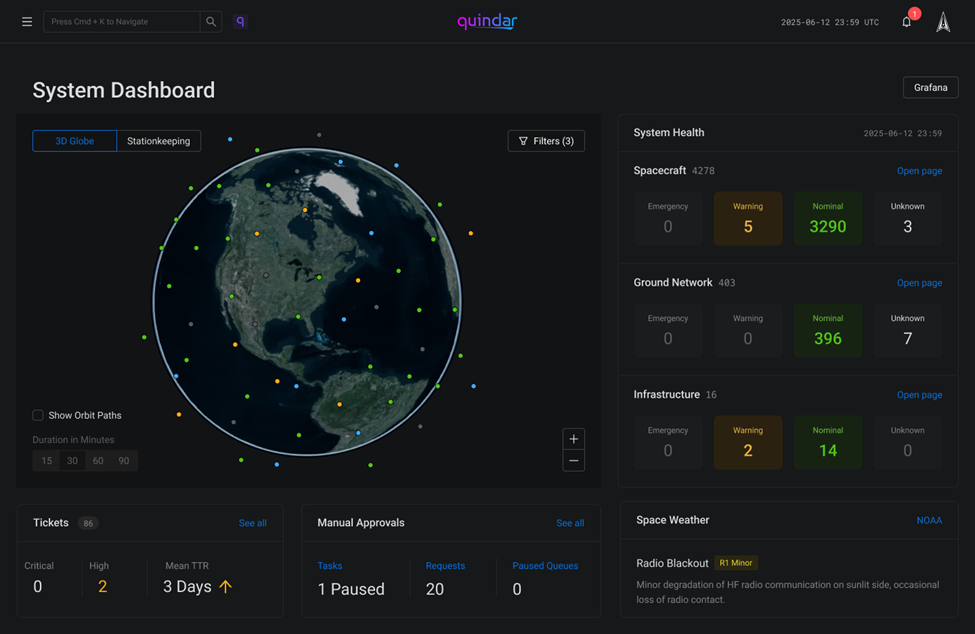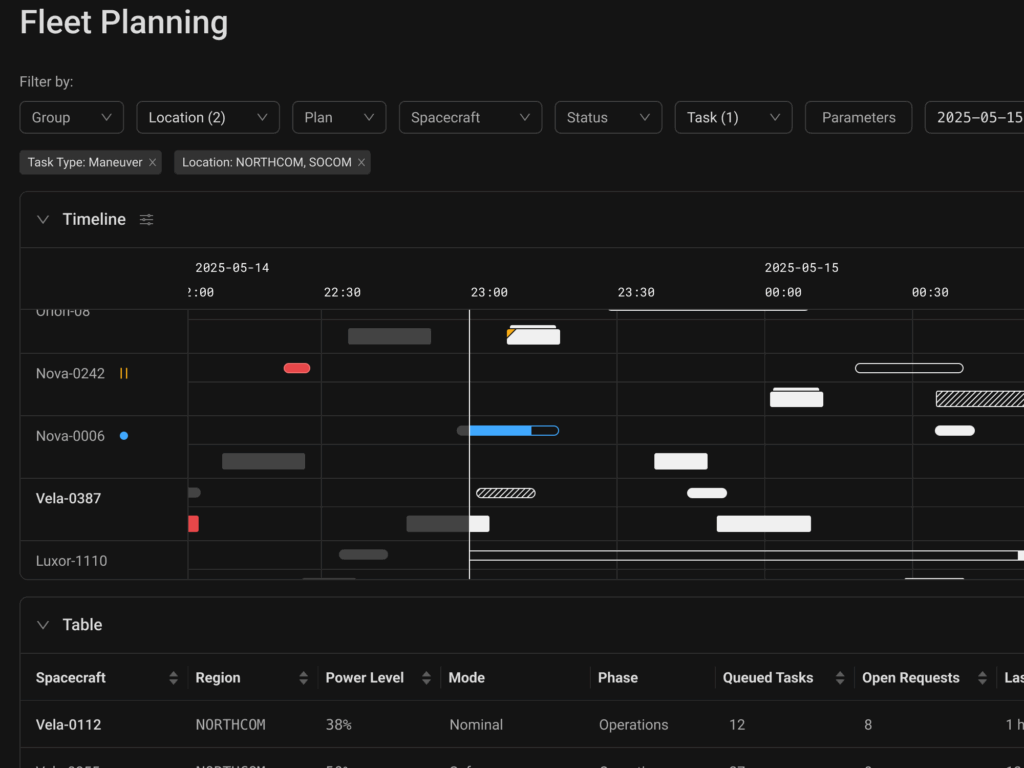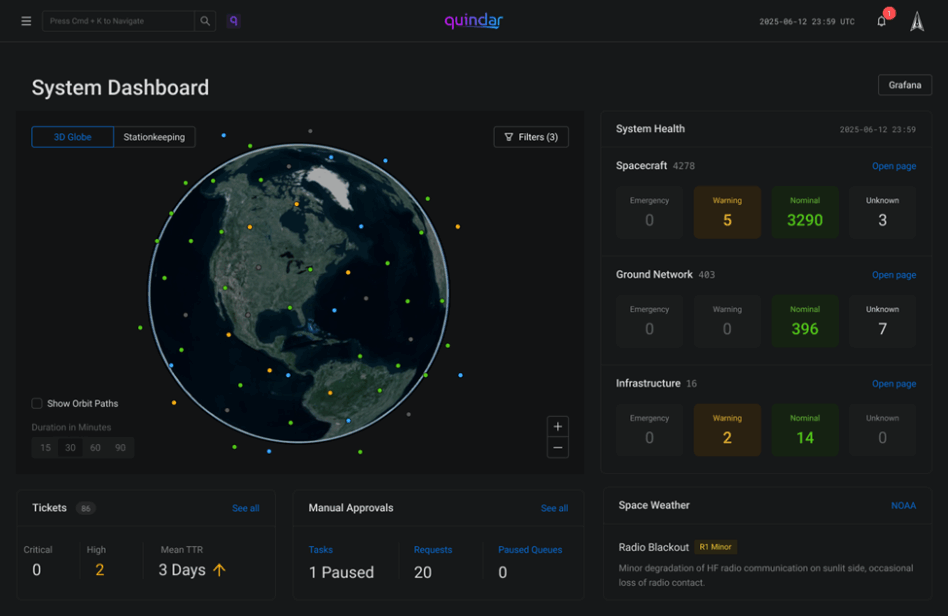The space industry is evolving at a breakneck pace, with government and commercial players alike under pressure to deploy satellites faster, cheaper, and more securely. For many, the hidden cost lies not in launch or hardware, but in the complex world of mission operations. That’s where Quindar, a three-and-a-half-year-old startup, is establishing itself.
“Everyone has been building mission operation stacks in-house,” said Nate Hamet, CEO and cofounder of Quindar. “There’s this misconception that building in-house is free. But when you start factoring in IT staffing, 24/7 operators, and compliance requirements, the costs balloon quickly.”
Quindar was founded in 2022 by six engineers who saw that most aerospace companies were pouring resources into bespoke operations systems, even though the companies’ real focus was on hardware and data delivery.
Quindar, however, saw an opportunity to frame their company differently. “No one builds their company to do mission operations,” Hamet said. “We sit in the midstream—as a utility that’s necessary to be successful with the hardware you build, and the data you’re trying to provide to your customers.”
From Compliance to Capability
From Day 1, Quindar put security and compliance at the core of its offering. Hamet emphasized that startups often race to space without thinking about long-term security requirements. “Speed is our superpower,” he said. “But eventually the government or enterprise customers are going to want your solution, and there’s a ton of compliance you need to meet. What you built in-house wasn’t a product—it was an internal tool.”
Quindar’s model aims to give customers a baseline that aligns with FedRAMP Moderate controls, laying the foundation for Authority to Operate (ATO) with government customers. “We want to provide that instant service, with the compliance baked in,” Hamet explained.

Trends Driving Change
Hamet outlined three major trends driving demand for Quindar’s approach:
- Government and military reliance on commercial systems. Agencies are increasingly spreading risk across multiple vendors. “An enemy can’t hit them all,” Hamet said. “So the government will buy 20 satellites from one manufacturer, 20 from another, and then require those manufacturers to run operations—even though that’s not why they started their companies. Quindar gives them the tech stack so that they can focus on building satellites —not software.”
- Pressure to abandon bespoke systems. Traditional ground systems take too long, and cost too much. “Historically, it takes 12 years to build out a ground system for Space Force programs,” Hamet said. “That means you’re using technology from 12 years ago, and spending billions of taxpayer dollars. Commercial solutions exist that can shrink those timelines dramatically.”
- The challenge of scale. Mega constellations are becoming routine, making human-in-the-loop operations untenable. “Managing satellite operations isn’t just people staring at screens, waiting for something to go wrong,” Hamet said. “With hundreds or thousands of satellites on orbit, you need automation. That’s what we’ve built into our platform—an event management system that understands flight dynamics, mission planning, and command and control—and that can automate responses.”

Building the “Datadog for Space”
Quindar’s platform layers automation and intelligence on top of traditional mission operations. Hamet described it as “the Datadog for space”—a system that monitors the entire service chain, from satellites, to antennas, to networks, to ISPs.
Among the platform’s newest features is the AI-enabled Quindar Assistant, which brings natural language prompting to satellite operations. “Think of it like autopilot in a car,” Hamet said. “You can drive yourself, or you can use lane assist, or full autopilot. With Quindar, you can type, ‘Schedule me a pass as soon as possible for Satellite No. 5,’ and the assistant will execute that without you needing to be a mission-planning expert.”

For now, customers can use the assistant for “vibe coding”, in which the platform generates ready-to-use Python code for Quindar’s APIs. Commanding functions are set to roll out soon, with government-ready versions in the pipeline.
Early Wins
Despite being a young company, Quindar has already logged several major milestones:
- Eleven months after Quindar was founded in 2022, Quindar’s platform sent its first task to a satellite.
- In 2023, less than a year later, a customer achieved “lights out” operations within 48 hours of deploying Quindar’s system.
- In 2024, Quindar enabled payload-based access control, allowing one customer’s customer to directly task a payload on a shared satellite—something previously handled through email requests to the manufacturer. “We gave them full transparency and situational awareness,” Hamet said. “That was huge for us.”
Looking Ahead
Quindar is moving through three phases of growth:
- Phase 1 (complete): Focusing on compliance and foundational mission ops tools.
- Phase 2 (current): Building situational awareness at scale, with integrations across manufacturers and systems.
- Phase 3: Leaning heavily into intelligence and autonomy, and eventually incorporating agentic AI to execute objectives under human guardrails.
“We want to democratize satellite operations,” Hamet said. “It should be easier to hire, easier to scale, and easier to write software. Aerospace shouldn’t be 12 years behind the tech industry.”
Hamet also pointed to broader industry needs. “We’re at about 11,000 operational satellites today, and expect 100,000 by 2029,” he said. “To be good stewards of space, we need to work together, integrate across software systems, and focus on solving problems—not just reacting when screens flash red.”
As more satellites enter service on-orbit, collaboration is essential. “We’re looking to partner more with manufacturers, system integrators, and government end-users,” Hamet said. “We invest in the best technology so that we can deliver the best experience to operators and warfighters. Taxpayers deserve commercial-grade solutions on Day 1—not decades-old technology.”
With that philosophy, Quindar aims to become the unseen backbone of satellite operations—bringing automation, resilience, and intelligence to an industry that can no longer afford to operate as it has.

